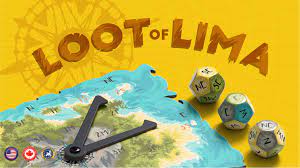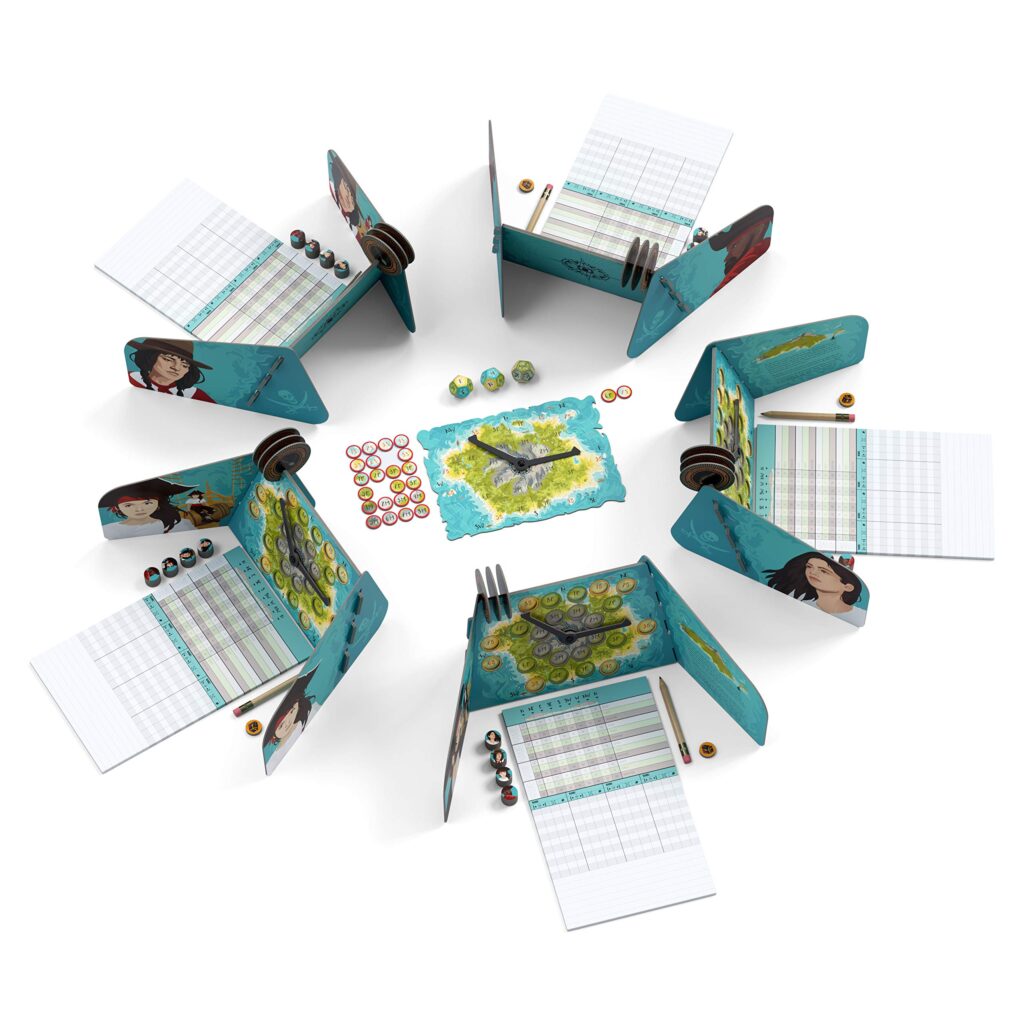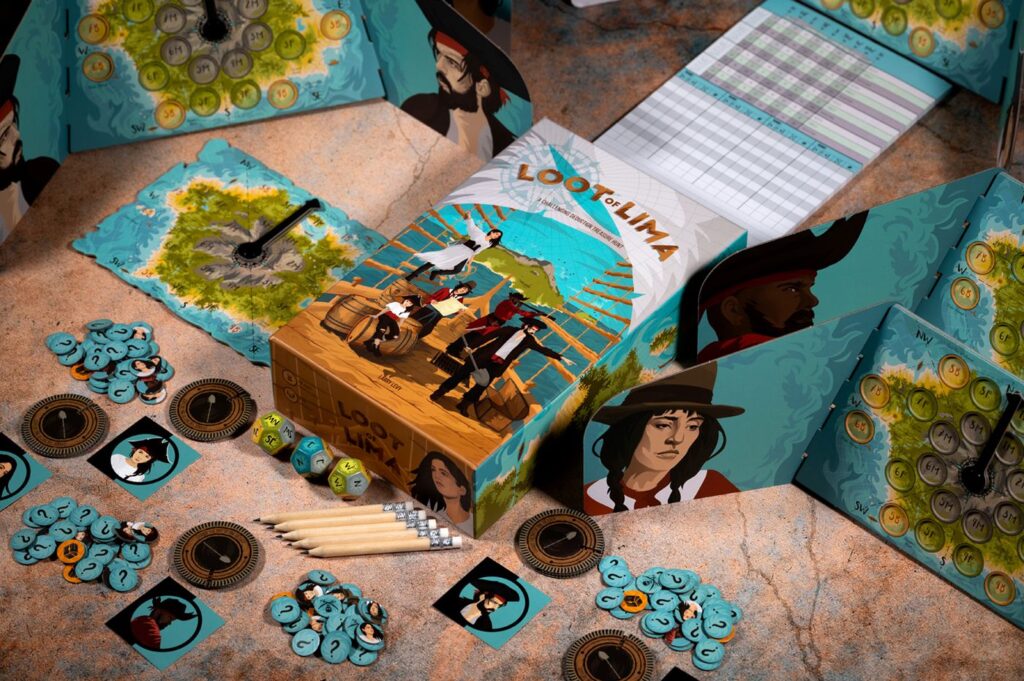
The Spanish government chose to relocate its treasure from Lima to Mexico for safekeeping in 1820 due to upheavals in Peru. The treasure was hidden on the Island of Cocos by the pirate crew who had taken over the ship carrying the loot. You are now searching for it, but in order to find it before the Spanish catch you, you will need to exchange some information with your fellow pirates!
The Island of Cocos has 24 places in the difficult deduction board game Loot of Lima: 8 on the coast, 8 in the forest, and 8 in the mountains. The treasure is concealed in two of these locations. Each of these locations is represented by a token in the game, and two tokens are first placed back in the box to indicate the location of the hidden treasure. The remaining tokens, which stand for locations you have already looked and are aware are not hiding wealth, are then distributed equally among the players.
In every turn, players choose the questions to ask their opponents by rolling three 12-sided dice. For instance, how many places in the southeast and northwest have you looked? Alternatively, how many places in the forest have you looked between the south and the west? In order to create overlapping clues, determine which sites have already been investigated, and ultimately identify which locations haven’t been searched (and hence where the treasure is buried), players utilize the answers to these questions.

In the multiplayer deduction game Loot of Lima, your goal is to uncover hidden riches before your rivals by putting together information and asking questions.
Games of deduction are analogous to Clue. In Clue, your goal is to solve a murder’s who, where, and how. You accomplish this by removing any whos, wheres, and hows that are unanswerable.
Lima loot is comparable, with one exception:
With the help of an ingenious coordinate system, Loot of Lima allows you to virtually explore several locations on Cocos Island.
Lima is far tougher to loot. Not more difficult to learn, but more difficult to work out the mind-boggling riddle of where the wealth is hidden.
How-To Operate
On the island of Cocos, you are looking for hidden wealth. There are 24 sites for Cocos. In two of them lies the buried treasure.
Each location in the game has a token. Two tokens, which indicate the locations of the treasure’s hiding places, are put back into the box at the beginning of the game.
The players are then distributed evenly with the remaining tokens. These stand for locations you have already looked through, therefore you are certain the treasure is not concealed there.
Players roll three 12-sided dice every turn. You may ask a player how many tokens they have within a given range by rolling two dice.
The answers to these questions help you create overlapping clues, identify previously investigated areas, and ultimately determine the location of the hidden treasure.
And that is the actual difficulty at hand. the actual enjoyment.
You obtain an abundance of overlapping data points. You rarely learn much from asking one or two questions. However, you can begin to put questions together using a variety of sources and perspectives. Curl your eyelids closed. Consider carefully. Work out a couple things. After that, apply what you’ve learned to aid in your further deductions.
In an attempt to provide you with an external viewpoint on the game, Game Boy Geek has paid for this video.
The game Deduce or Die, created by Larry Levy, served as the inspiration for Loot of Lima. It was published as a print-and-play version in 2003. I performed it. I adored it.
I concluded the game needed to be published after playing it for the hundredth time and showing it to other groups of fans. Some tried to dissuade me from doing it. “The market isn’t big enough for a deduction game.” “People don’t want a game that is that hard.”
All of that, however, might not be accurate. However, this game needs to be more widely known.
I asked Larry via email for his permission. After that, I started working on turning the print-and-play game into a published one. Essentially, this meant removing or softening a few rules to make the game simpler to understand without making the deduction simpler.
improving the elements to make the questions asked during the game simpler to see
altering the theme to add some immersion to the game
if you enjoy playing deduction games. This one reigns supreme.
The best deduction game created to date. In essence, it’s a multi-player, interactive logic puzzle. An exceptionally good one.
Deduce or Die boasts many Ph.D.s in rocket science and astrophysics, Sleuth and Black Vienna are high schools, while Clue is an elementary school.
This is a challenging game where you have to continuously push your mental speed forward. It definitely surpasses Sleuth. Moreover, it shares more similarities with Sudoku puzzles than any of the terrible Sudoku games available on the market. As a result, some people who don’t often enjoy board games will find it appealing.

Contents
- Five Player Displays
- Map Board with Dial
- Three Dice
- 140 Reduction Points, 28 for Every Color
- 15 tokens with special abilities (5 of each type)
- 24 Tokens for Location
- Ten Treasure Coins
- Notation Sheet Pad
- Five Stylus
